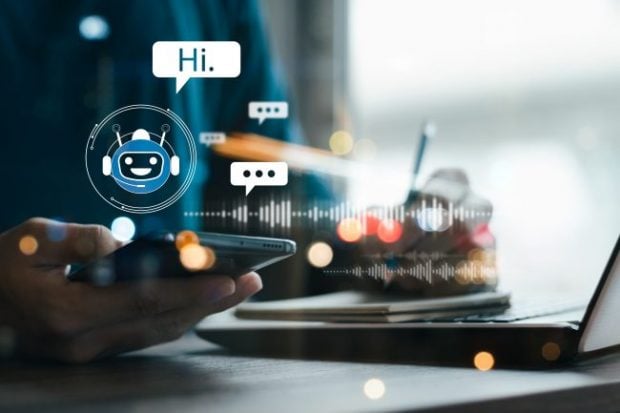 Credit/AdobeStock
Credit/AdobeStock
ChatGPT burst onto the scene in November of last year, cementing itself as one of the fastest-growing consumer applications to hit the market. In March, OpenAI's chatbot surpassed one billion users and has spread like wildfire across multiple spheres of the workforce. The notion of using artificial intelligence in the financial services industry is no longer a novel idea – AI is here and developing quickly.
Typically, AI works behind the scenes of financial institutions, providing services such as spam identification, fraud prevention and risk assessments. ChatGPT is a different story, being an AI that is accessible, interactive and has achieved significant advances in natural language processing, understanding and generative text.
Recommended For You
With ChatGPT rapidly adapting and learning, the range and complexity of responses will expand along with the ease of conversation flow, creating a plethora of potential opportunities for financial institutions. However, there are also significant obstacles in the way of ChatGPT being used among credit unions in the distant future.
What to Consider Before Investing in ChatGPT
ChatGPT could be a powerful tool for credit unions, but it's important to determine whether implementing such a tool will help bolster communications or become a hindrance.
The purpose of implementing AI-driven chatbots ideally should be to improve the member experience, rather than solely for the purpose of lightening the workload of employees. Chatbots that are primarily rated on a percentage of deflections (i.e., chats that aren't escalated by humans) are not an ideal choice because they hamstring members and reduce human-to-human interactions. This can lead to members feeling annoyed or frustrated. Negative experiences tend to outweigh positive ones and can fracture relationships with members.
It's true that AI software possesses a wealth of knowledge, but they don't provide all the answers. There needs to be a smooth transition from AI interaction to a human agent. Chatbots won't be able to help a perturbed member whose questions are not being addressed. A breakdown in getting a member needed help can cause delays, and hurt the success and reputation of a credit union.
The Challenges Credit Unions Face With ChatGPT
A primary objective of a chatbot should be to streamline the member experience; if a member asks a question, the chatbot saves time by providing a speedy response and points the member in the right direction. Although helpful, credit unions may find that sophisticated chatbots like ChatGPT can be challenging in spaces where members are present, which can in turn lead to several obstacles for credit unions.
Chatbots are only as useful as the back-end infrastructure supporting them. For credit unions' systems to exchange data and promote easy interactions, they must utilize API interfaces to data-housing functions such as core systems. This means credit unions will need to invest in IT architecture and collaborate with third-party services, which can be complicated and expensive.
In the banking industry, regulatory and compliance requirements are a major issue. There are likely situations where ChatGPT can make mistakes by using data that is outdated to interpret statements. ChatGPT can also respond with a high degree of confidence, which is problematic, especially in financial services.
An advantage of human interactions is understanding ownership and responsibility for advice that members receive. In today's digital world, this advantage is commonly underestimated. Accountability has no room for ambiguity. People do not want to be liable for giving the wrong advice. This apprehension creates rigid processes, and clear rules and hierarchies. ChatGPT does not take that sort of precaution.
Lastly, compared to human interaction, AI does not provide a source of empathy for credit union members. Money and finance management can be a sensitive topic that requires a human touch rather than the cold calculations of AI.
Benefits and the Future Effects of ChatGPT on Credit Unions
AI systems are proficient in high-volume, repetitive tasks that lack variability. This is especially useful in content creation, preferably in areas that lack intense examination or scrutiny. ChatGPT can be effective in producing basic summaries for products and services along with templates for website pages. Credit unions can go a step further by incorporating hybrid models that do the bulk of simple human tasks like proofreading and editing, providing routing numbers, assisting in change of address requests and various other self-service needs.
Improvements to ChatGPT will continue to occur every six to 12 months. This results in the world quickly approaching situations of AI-to-AI interactions and services. There could potentially be situations where AI serves as an individual agent. These AI agents would communicate with financial institutions' AI to progress through the early stage of a loan negotiation.
Despite AI having the propensity to shake up workflows and roles, the financial services industry shouldn't anticipate the widespread replacement of human-filled positions and interactions.
 Slaven Bilac
Slaven Bilac Slaven Bilac is CEO of Agent IQ, a San Francisco-based provider of digital relationship banking solutions.
© Touchpoint Markets, All Rights Reserved. Request academic re-use from www.copyright.com. All other uses, submit a request to [email protected]. For more inforrmation visit Asset & Logo Licensing.






